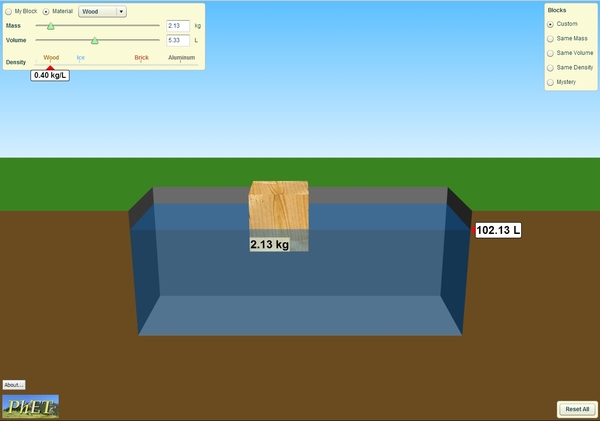Simulations
4. Simulations in teaching natural sciences
Computer-supported demonstration and simulation is especially recommended when the topic and phenomenon are either hazardous, require special safety measures or equipment not available in schools or when the teacher is trying to present the players in the micro world or natural or other phenomena otherwise not reproducible in school labs. What makes teaching truly effective is when students' personal experience is combine with the "virtual" laboratory using computer methods.

Interactive simulation
(http://phet.colorado.edu/sims/density-and-buoyancy/density_en.html)
Computer simulations are designed to visualise complex processes in simple terms yet in a visually appealing and realistic way. One of the most important benchmarks of simulations is interactivity behind which mathematically correct models of real-life processes are at work.
A large part of digital content called simulation is a cartoon-like animation where students are only passive viewers of the images. This application can successfully complement the explanations by teachers or illustrations in technical materials. Example: http://lgfl.skoool.co.uk/keystage4.aspx?id=315
Those simulations may be used with more success in electronic learning and teaching where interaction and intervention are required from students. Interactive simulations often include parameters that students can change and thereby control the simulation. Active student participation in the learning process is coupled with the opportunities of replays, frequent trials and individual paths offered by computer technology.
One of the characteristics of electronic learning materials of natural sciences is that animations and simulations support concepts that are either hard to interpret or that cannot be reproduced in a test environment. The extent of interactivity and the degree of visualisation together significantly influence understanding and integration of new concepts (Limniou, Roberts, Papadopoulos, 20082).
2Limniou Maria; Roberts David; Papadopoulos, Nikos: Full immersive virtual environment CAVETM in chemistry education, Computers & Education 51 (2008), pp. 584-593.